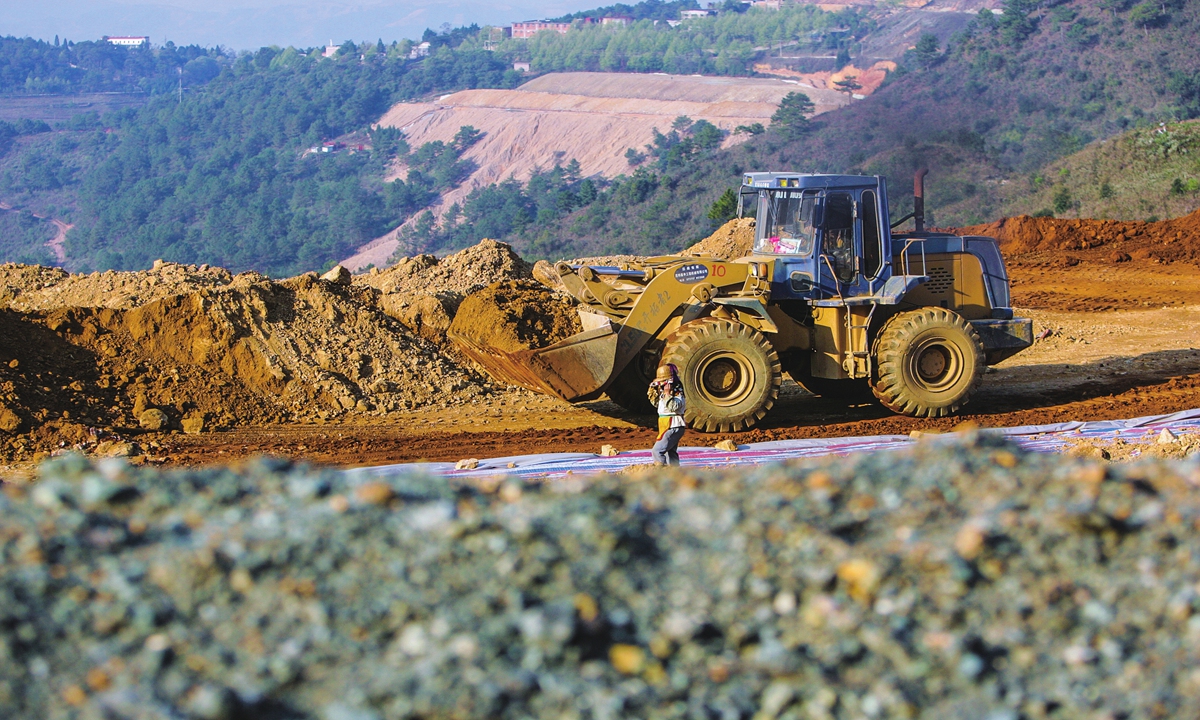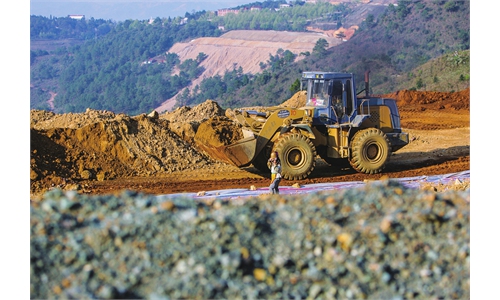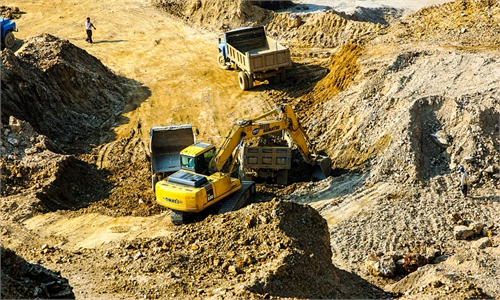Concerns that US-Mongolia rare-earth cooperation will undercut China's industry are unwarranted

A rare-earth mine in Baoshan, Southwest China's Yunnan Province Photo:VCG
Mongolia and the US said recently that cooperation on rare earths and key minerals will be deepened under the Memorandum of Understanding signed between the two countries in June. Some people reckon that the Mongolia-US rare-earth cooperation may undercut China's rare-earth industry. In fact, a comprehensive analysis shows that these concerns are unwarranted.
First, global rare-earth resources are not scarce. According to the data from the US Geological Survey (USGS), the world's proven rare-earth resource reserves have remained at about 120 million tons in recent years, and the global rare-earth reserves amounted to approximately 130 million tons currently.
The global rare-earth production maintained an overall upward trend from 2018 to 2022. In 2022, the global rare-earth production was 300,000 tons, up 3.4 percent year-on-year. According to estimates, the existing rare-earth reserves could supply the world for 400 years, much higher than 43 years for oil and 63 years for natural gas, indicating that rare-earth resources are not scarce compared with major mineral resources.
Second, the US is already China's largest importing source of rare-earth metal mines. The US has about 2.3 million tons of rare-earth reserves, but its rare-earth production in 2022 is 43,000 tons, and the mining life is only 53 years. According to the data released by China's General Administration of Customs, from January to June 2023, China imported a total of 37,852.27 tons of rare-earth metal ores, of which 99.73 percent were imported from the US.
This is mainly due to the high cost of production and processing in the US, and the mining and processing industry of rare-earth minerals has almost been reduced to zero for many years. In recent years, influenced by lobbying from interest groups, the US Congress has provided subsidies for domestic rare-earth mineral mining. However, due to the lack of a processing system, the high-cost mined rare-earth minerals can only be exported to China for processing.
It is impossible for the US to directly import large quantities of rare earths from Mongolia. China is the world's largest rare-earth country, with rare-earth reserves of 44 million tons, accounting for 29 percent of the world's total rare-earth reserves. Mongolia's rare-earth reserves are second only to China, reaching 31 million tons. Although Mongolia's rare-earth reserves are much higher than that of the US, the former also lacks a complete rare-earth processing industry chain and can only export rare earth ores. But the rare-earth minerals mined by the US under its own high subsidies are all exported to China, so how can it be possible to import a large amount from rare-earth mines in Mongolia?
In the course of the development of the rare-earth industry in China, the sector has gone through several stages of low-cost mining and low-cost export of rare-earth ores, the formation of primary processing capacity of rare earths, the formation of intermediate and advanced processing capabilities of rare earths, and the formation of global influence in rare-earth processing.
Since 2011, China's annual rare-earth patent applications have ranked first in the world, exceeding the sum of other countries. Now patents from China have accounted for more than 50 percent of all patents in rare-earth industry, and the trend is accelerating. In the past 10 years, China has acquired large-scale overseas rare-earth processing enterprises to form a complete industrial chain. With various advantages, China's rare-earth processing scale has become the world's largest. According to a Goldman Sachs report in early July, China's rare-earth production accounts for 90 percent of the world's refined production.
Therefore, Mongolia's most ideal cooperation partner for rare-earth development and export is China. The so-called rare-earth cooperation between the US and Mongolia will be less practical, because the US neither has the capability nor the capacity to process Mongolia's rare-earth minerals. Moreover, establishing a comprehensive rare-earth product processing system in the US in the short term is also challenging. As long as the US continues to provide subsidies for rare-earth mining, it will be difficult to change its pattern of exporting rare-earth minerals to China.
Global technological competition is becoming increasingly fierce, and the same is true in the field of rare earths. Although China has built up the most complete rare-earth industry chain in the world, it is still catching up in some top fields of rare-earth technology. China can't be satisfied with only having the advantages of rare-earth processing, but should promote the joint efforts of the industry and the scientific and technological circles on the basis of huge production capacity, constantly break through the technical bottleneck, truly seize the initiative in the global rare-earth industry, and make the rare-earth sector an unshakable pivot for high-tech industries.
The author is a researcher at the Institute of Science and Development, Chinese Academy of Sciences. bizopinion@globaltimes.com.cn



